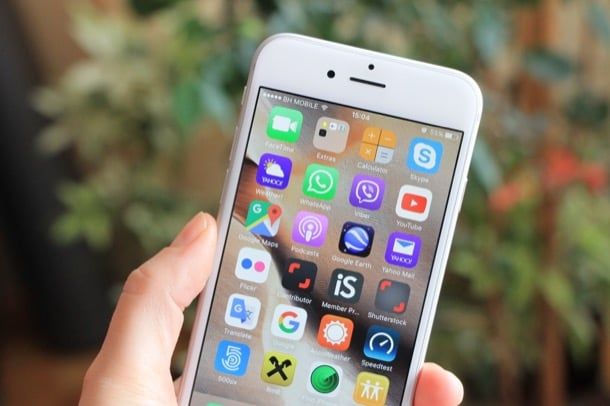
Apps may dominate the digital media landscape, but it’s harder than ever to get people to download them.
comScore’s last two annual mobile app reports have shown that our home screens are mostly dominated by the same handful of blockbusters, many of which are owned by Facebook and Google.
That means even if you’ve managed to build an app that makes novel or clever use of technology to solve a common problem in the market, there’s no guarantee of converting that demand to users — or dollars.
The bad news is there's no simple recipe for success. But as the mobile app economy matures, patterns have emerged among the winners that hint at the key ingredients. Here’s the best advice we’ve heard from tech developers and marketers in the past few months.
1. Know your audience, quantitatively
Rob Adams, the author of If You Build It, Will They Come?, requires students in his New Venture Creation course in UT Austin’s MSTC program to interview 100 potential customers in depth before developing a business plan.
“If I go talk to 100 people in my target market — which is time consuming, but free — I guarantee you I’ve got a different product than I started with,” he said.
The truth is, no matter how good your idea — or the technology supporting it — you’re going to have to market your product. And marketing means putting your product in front of the people who are going to want it, even if they don’t know it yet. You need to know who those people are, and what they care about.
 “There’s a lot of noise out there,” said Ashley Chavez, senior director of marketing at
“There’s a lot of noise out there,” said Ashley Chavez, senior director of marketing at
But there are other ways to stand out. Chavez recommends looking closely at the search keywords that bring visitors to your website, then creating experiences catered to different categories of visitors.
“It really comes back to this concept of mapping out your personas and audiences and making sure you have messaging that’s relevant to them,” Chavez said.
To build their first product,
talked to more than 50 potential customers and took the time to watch them run their businesses.
Co-CEOs Matt Stuart and Andrew Allison (pictured above) offered this advice to new startups: What makes you so sure your product is great?
“A product’s quality is a function of its users’ reaction to it,” they said in an email interview. “If you follow a disciplined customer development process, you should emerge at the end with actual users who are engaging in an exchange of value with your company. That means they’re exchanging money or time to use your product.”
The best way to do that is to understand the problem your customers are trying to solve before you sink too much time and money into developing your product.
2. Have a plan
Lean tech teams may thrive on rapid cycles of iteration, but a typical user audience doesn’t. Chavez said your messaging should stay as consistent as possible if you want to build that audience.
“In a startup environment, there’s always this pressure to go, go, go,” she said. “You can still be agile and accommodate shifting priorities while having a larger plan in place. That way you’re constantly thinking ahead, even though you’re still driving new product activities for your roadmap. Without that roadmap, you’re leaving yourself susceptible to the peanut gallery.”
3. Keep it simple
When pressed for advice for first time founders, seasoned tech entrepreneurs frequently warn against the temptation of cramming too many features into a product early in its life.
has been developing custom programs for 30 years, and still sees clients struggle with this. “Keep your application as simple, clean and user friendly as possible,” said Rodney Muras, the company’s vice president of solutions and services. “Then continue the customer feedback loop to learn what resonates with your customers.”
“Keep your application as simple, clean and user friendly as possible,” said Rodney Muras, the company’s vice president of solutions and services. “Then continue the customer feedback loop to learn what resonates with your customers.”
It’s not just important for user experience, either. Making software takes planning and focus like any other creative collaboration, so it’s important for the success of your development team to choose one plot and stick to the script.
It’s a lot easier to iterate on the success or failure of one set of goals and features than several, especially early in the life of your app.
4. Execute really well
It seems so obvious, but plenty of apps miss the mark — and today’s users are statistically unlikely to give you a second chance. Even in 2013, a Compuware study found that only 16 percent of mobile app users would give a buggy new app more than two tries.
That’s just one more reason to limit your feature set for version one. Everything needs to work smoothly and scale well.
 To that end,
To that end,
“It’s tough for companies to create and maintain consistent experiences across native apps on multiple platforms, and they get stale,” he said. “Responsive web design is more scalable, especially consumer web. That’s probably the future we’ll see: Most elements covered by responsive web solution, and then only things that require very specific info, like payment info and geolocation data, texting capabilities, video communications, and the like will require native apps.”
5. Operational side
If your app is a hit, your reward is a whole host of new challenges. That’s especially true if your business has goods to deliver.

“Until you start doing it, there’s always 10,000 details no one was particularly cued into,” he said. “Let me put it this way: There’s a tendency to think principally about software. But if you’re in a tech business that has things like kitchens, storefronts, POS, bags with product in them and fulfillment, inevitably the hardest stuff to do is making the operational end work.”
6. Partner up when it makes sense
We’ve mentioned this one before: Entrepreneurship culture tends to romanticize doing everything yourself. But efficiency requires a judicious use of time and resources, and there’s no point building from scratch what someone else has already made well, especially if they’ll share it or sell it.
When Snap Kitchen rolls out its e-commerce platform for delivery, Kirchhoff said the company won’t bother building its own transportation network or hiring drivers.
“[Favor CEO] Jag Bath is a friend of mine. We’re not running our own logistical system,” he said. “Companies like Favor, Postmates, Amazon Prime and Uber are really nailing delivery logistics with huge advantages in route density and other ways to drive down delivery cost. We’re much better off partnering with those guys via API.”
He also sees opportunity — not competition — in health and wellness apps and programs like Weight Watchers, where he was CEO for 14 years.
“We see them as partners,” he said. “When I look at WW, or Underarmour and My Fitness Pal and FitBit, it’s a natural extension to say ‘Oh, by the way, here’s a store you can go to where you can’t make a bad choice.’”
7. Stay top of mind
With so many apps competing for users’ attention, the only ones that earn regular use — and that coveted home screen real estate — will be the ones that solve a real problem for users or deliver a deeply engaging, personal experience.
A study on app engagement released earlier this week by The Wharton School at The University of Pennsylvania found that “good user experience design has become table stakes.”
The report found that behavioral segmentation is key to understanding users in the design process. Some respond to rewards, while others are motivated by nudges from friends and family.
Rewards are key to overcoming the balance of effort versus benefits, which the report claimed too many applications get wrong with hurdles such as long sign-up processes with too many questions.
By contrast, Pandora gives you music right out of the gate, rewarding users’ one-tap feedback on each song with an increasingly personalized DJ.
Waze rewards users with highly detailed and relevant navigation in exchange for location and calendar data, which points to the value of understanding a user’s context based on readily available information.
Have a tip for us or know of a company that deserves coverage? Email us a tip.








